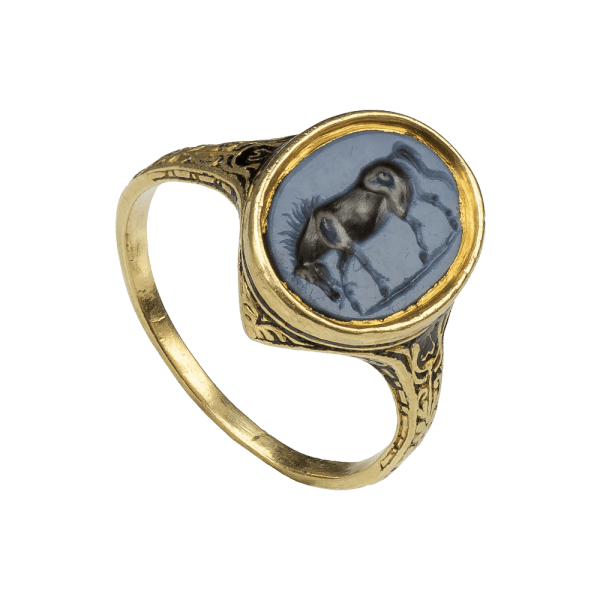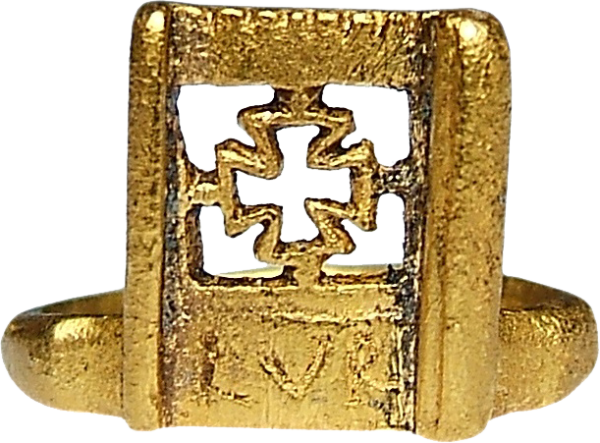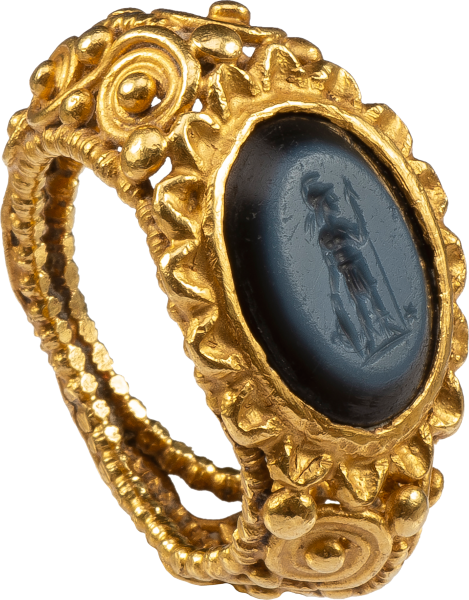


Ring with Bust of Tyche
, Roman, late 1st century - 2nd Century AD



Ring with Bust of Tyche
Description
Miniature sculpture in ring form of the Greek goddess of fortune and luck. This glorious ring is published.
Gold ring with hoop, flat on the interior and slightly concave on the exterior, which widens to form of a flattened oval-shape base as bezel. This supports a sculptural bust of Tyche in three-quarter profile with a turreted crown on her head. She wears a chiton across the breast and veil on the head. In the crevices of the figure are remnant particles, probably from being buried in the ground. The ring is in good wearable condition.
Provenance:
Bochberg Collection, Germany, prior to 1977; Art Market, London, 1990s; Private Collection, New York, 2003-2015; Private Collection, 2015-2016; Sold, Christie’s Auction Antiquities,11 Apr 2016, lot 62.
Published:
W. Hornbostel, Kunst der Antike - Schätze aus norddeutschem Privatbesitz, Mainz, 1977, p. 6, no. 426.
Literature:
Tyche, also known as Eutychia, was the Greek goddess of chance, luck, and fortune. She has various attributes, but most prominent is the turreted crown, symbolizing her as the deity responsible for the fortunes of a city and its destiny- both negative and positive. According to Greek mythology she was the daughter of Aphrodite and Zeus, or Hermes. Cities often venerated their own versions of the goddess and her cult beginning in the fourth century BC and continuing into the Roman and early Christian era.
The image of Tyche is found on coins, cameos, intaglios, and rings from the fourth century BC onwards, see: Chadour 1994, vol. I, no. 69 with example of a ring from this early period. Roman rings of the second century AD have sculptural heads or busts similarly positioned, like that of Jupiter Serapis in bronze or gold, or of Empress Plotina, cf. parallels in the Alice and Louis Koch Collection in the Swiss National Museum, Zurich (Chadour 1994, vol. I, nos. 255,256, 258 and 259 with further references) and a ring with cupid head in high relief (Scarisbrick 2007, p. 62, figs. 78-9). An earlier example of the type was found in the Petescia hoard with head of Jupiter (Gertrud Platz-Horster. Antiker Goldschmuck, Altes Museum, Antikensammlung Staatliche Museen zu Berlin, Berlin 2001, pp. 84-86, no. 50, c. 50 BC- 20 AD).
The owner during the Roman period in the second century AD may have sought luck, fortune or even prosperity when wearing the ring.


